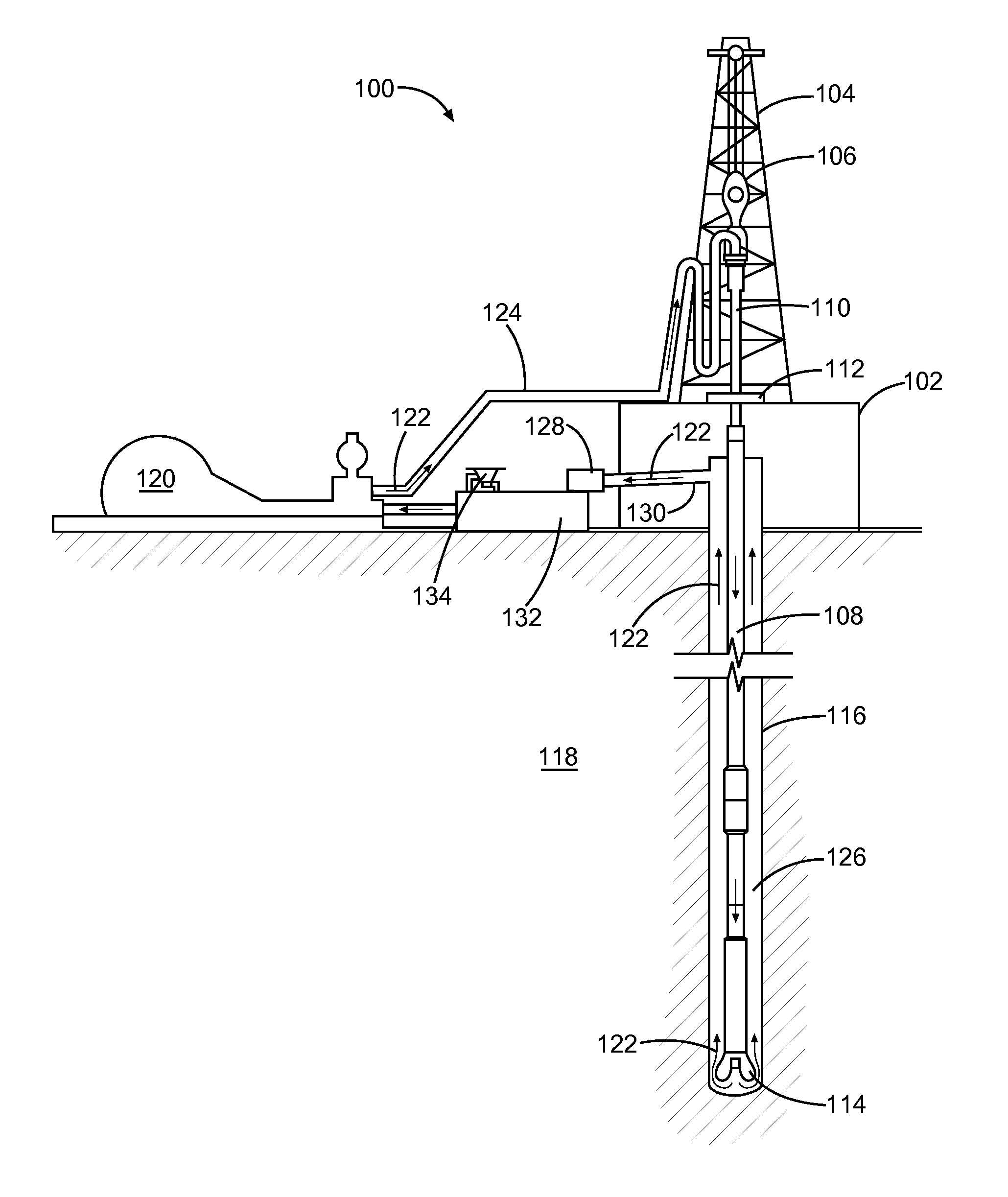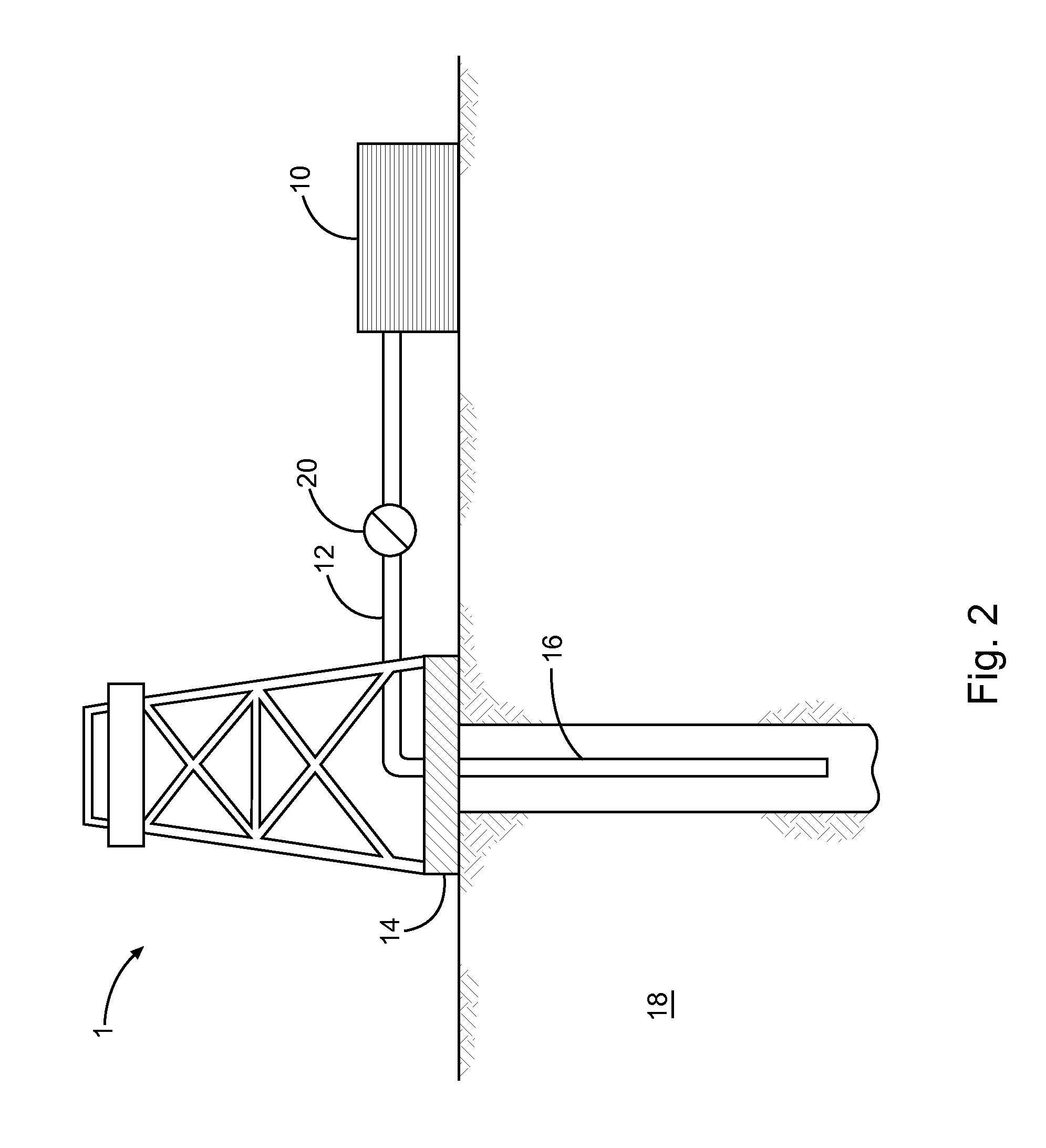Ethylene viscosifier polymer for treatment of a subterranean formation
a technology of viscosity and viscosity, applied in the direction of fluid removal, drilling machine and method, borehole/well accessories, etc., can solve the problems of large more dominant fractures, low efficiency preparation of viscous materials, high transportation costs, etc., to avoid or reduce the difficulty of cleaning, avoid or reduce the clogging of reservoir pores with clay, and the effect of sufficient viscosity or fluid loss control
- Summary
- Abstract
- Description
- Claims
- Application Information
AI Technical Summary
Benefits of technology
Problems solved by technology
Method used
Image
Examples
example 1
Preparation of Polymer Hydrogels
[0142]Polymer hydrogels A were prepared by copolymerization of 2-acrylamido-2-methylpropane sulfonic acid (AMPS) (83.5 mol %) and N-vinylpyrrolidone (NVP) (13.5 mol %) with two crosslinkers at the same time: methylenebisacrylamide (MBA) and pentaerythritol allyl ether (PAE, having an average of about 3.2 allyl groups per molecule), using either 3 mol % PAE or 1.5 mol % PAE and 1.5 mol % MBA (3.0 mol % total).
[0143]Polymer hydrogel B was prepared by copolymerization of AMPS (82 mol %), NVP (12 mol %) using 5 mol % PAE (having an average of about 3.2 allyl groups per molecule) and 1 mol % MBA (6.0 mol % total).
example 2
Preparation of Samples from Hydrogels A
[0144]Polymer hydrogels A were evaluated with the mud formulation shown in Table 1. The mud was hot-rolled at 400° F. for 36 hr, by placing the mud in a high pressure aging cell, sealing it, and rolling it in a heated oven.
[0145]
TABLE 1Mud formulation 1.Water, bbl0.828Polymer, lb5 or 6Barite, lb300KCl, lb2NaCO3, lb4NaOH, lb0.4
example 3
Rheological Properties of the Samples from Hydrogels A
[0146]Rheology data was obtained at 120° F. with Fann 35.
[0147]Table 2 shows the fluid properties for polymer hydrogels with different crosslinkers. It can be seen that polymer hydrogels crosslinked with PAE and MBA together give better thermal stability (higher viscosity, especially at lower shear rate) as compared to the polymer hydrogel crosslinked in PAE alone.
[0148]
TABLE 2Fluid properties with polymeric hydrogels of different crosslinkers. PV is plastic viscosity (dial reading at 600 rpm − dial reading at 300 rpm), YP is yield point (2 * (dial reading at 300 rpm) − dial reading at 600 rpm), PAE is pentaerythritol allyl ether, MBA is methylenebisacrylamide.CrosslinkerPAE PAE + MBA PAE + MBA(3.0 mol %)(3.0 mol % total)(3.0 mol % total)Polymer in formulation (lb)665Rheology at 120° F. before and after hot-rolling at 400° F. for 16 hrPre-hot Post-hot Pre-hotPost-hotPre-hot Post-hot rollingrollingrollingrollingrollingrolling600 r...
PUM
| Property | Measurement | Unit |
|---|---|---|
| viscosity | aaaaa | aaaaa |
| viscosity | aaaaa | aaaaa |
| mol % | aaaaa | aaaaa |
Abstract
Description
Claims
Application Information
 Login to View More
Login to View More - R&D
- Intellectual Property
- Life Sciences
- Materials
- Tech Scout
- Unparalleled Data Quality
- Higher Quality Content
- 60% Fewer Hallucinations
Browse by: Latest US Patents, China's latest patents, Technical Efficacy Thesaurus, Application Domain, Technology Topic, Popular Technical Reports.
© 2025 PatSnap. All rights reserved.Legal|Privacy policy|Modern Slavery Act Transparency Statement|Sitemap|About US| Contact US: help@patsnap.com



